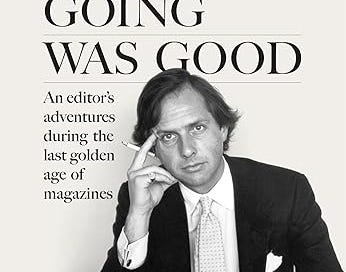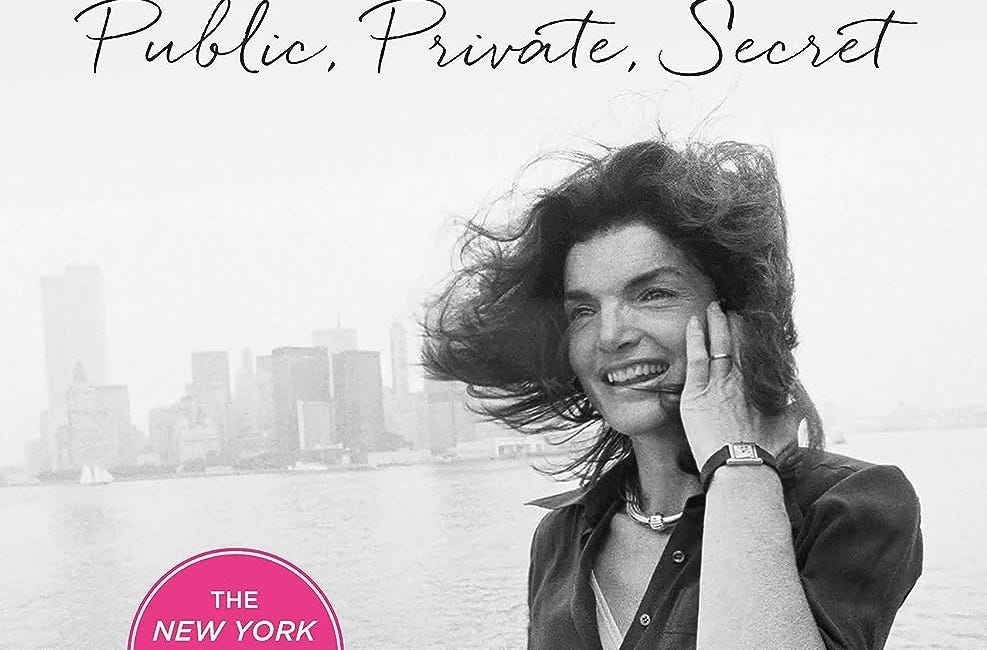When the going was gratuitous
Jaw-dropping expense accounts, Oscar Parties, hosting Princess Margaret and more details in the memoir of former Vanity Fair editor, Graydon Carter.
He helped guide the story that would reveal the identity of “Deep Throat,” the source that unmasked the Watergate scandal. He went to great lengths to get the first published pictures of Tom Cruise and Katie Holmes’ baby, Suri. The most coveted party on Oscar night was his brainchild.
For all his impact on American culture, I had never heard of Graydon Carter, the longtime editor of Vanity Fair. But when I kept seeing numerous excerpts about the jaw-dropping expense accounts and the A-list anecdotes, I felt compelled to check out Carter’s memoir, “When the Going was Good: An Editor's Adventures During the Last Golden Age of Magazines.”
I’m glad I did. This book is possibly my favorite book so far this year.
In his memoir, Carter describes his travails, from star-studded events like Oscar Parties and White House Correspondence Dinners, to more journalistic endeavors like coverage of the O.J. Simpson trial and the Iraq War.
Spy Magazine
One of Carter’s earliest exploits was founding Spy Magazine, which reveled in dishing out less-than-flattering stories about high-profile movers and shakers.
I really don’t know how to describe this magazine so I will let Carter speak for himself:
In Spy, we wanted a magazine of wit, satire, and what Kurt [Anderson] called literate sensationalism. We wanted humor combined with hard reporting… There were great journalists. And there were great humorists. Be we had to find journalists who could get the story and then write it with a dash of distance and irony.
The magazine skewered everyone from George Steinbrenner to Keith Haring to Gore Vidal to Kurt Vonnegut’s wife.
Donald Trump, who made frequent appearances in the pages of Spy, was described as a “short-fingered vulgarian.” Years later, when Trump was announcing his run for president in 2016, he sent Carter a 20-year-old ad for “The Art of the Deal.” In his signature black Sharpie, Trump had circled his hands and wrote, “See, not so short!” Carter sent the photo back with a note saying, “Actually, quite short.” A Trump Twitter tirade ensued.
For years, Carter and his staff at Spy lampooned the rich and famous. When he was named editor of Vanity Fair, he would have to walk back many of his words and rebuild bridges he had burned down.
The golden era of magazines
In its heyday, a typical issue of Vanity Fair boasted 400 pages (about 250 were ads). A typical one-page ad in the 90s would cost $100,000. Senior staff were picked up in limousines. They had expense accounts for lavish lunches and dinners, flowers, hotel rooms and other perks. There was an eyebrow lady.
When the magazine hired Dominick Dunne to cover the O.J. Simpson murder trial, they paid for him to stay in the Chateau Marmont for the duration of the trial. Room service, laundry and daily transportation were all part of the expenses paid for by Vanity Fair. On top of the hefty payments for the articles Dunne produced.
The investment appeared to pay off as Dunne’s reporting gained wide acclaim. As journalist Jeffrey Toobin, who wrote a seminal book on the trial recalled, “Lance Ito might have been the judge, but Dominick was the mayor of the courtroom.”
Not all investments panned out. Carter hired famed writer Norman Mailer to cover the 1992 Democratic National Convention but was underwhelmed by what Mailer turned in. He hadn’t done any real reporting or gained any unique insights into behind-the-scenes intrigue. So Carter spiked the story. But he still paid Mailer his $50,000 fee and the expenses Mailer had accrued while attending the event.
Imagine being paid the equivalent of $116,000 in today’s money for a story that didn’t even run.
During his time at the helm, Carter would hire contributors such as Christopher Hitchens, Maureen Orth, Michael Lewis and Annie Liebovitz, who would become renowned for her cover shoots.
Hosting Hollywood Royalty and Actual Royalty
It was during Carter’s tenure that Vanity Fair began to host their Oscar Party, which quickly became a coveted invite among A-listers.
The seating arrangements were an entire ordeal on par with planning for a royal wedding. There was the Tom Hanks table where they often sat Martin Short, Jimmy and Jane Buffett, and Tom Ford. Carter’s table included guests like Larry David or Colin Firth. Where do we sit Jerry Jones and his wife? Don’t put two actors who went for the same role together. Which directors had a falling out with which actors?
The night also involved trying to hold the line against demands from Courtney Love to Harvey Weinstein. Adrien Brody tried to smuggle out an electrified candle lamp one year. Bad behavior was rampant.
In addition to Hollywood royalty, Carter also (reluctantly) once hosted actual royalty. A longtime friend, who was also close with the Royal Family, insisted he host Princess Margaret when she came to New York City. It would be fun! As Carter recalls:
I confess I didn’t know much about Princess Margaret, but my slim scholarship turned up any number of descriptions of her at that stage in her life, noone of which included the descriptive fun.
^^Can you imagine hosting this woman in your home?
Complicating matters was the fact thatVanity Fair often contracted with Princess Margaret’s ex-husband, Tony Snowdon, as a contributing photographer.
Carter worked on the arrangements for hosting royalty in his three-bedroom New York City apartment. They didn’t even have a dining room. The list of requirements was long. Several protocols had to be followed.
When dinner ended, Margaret stayed long past 10 p.m. Then 11 p.m. It was considered a breach of protocol for guests to leave before a member of the Royal Family so the dinner guests were essentially held hostage. Barry Diller, Peggy Noonan and others finally decided they had had enough. Finally, around midnight, Her Royal Highness decided to leave.
Et tu, Anna Wintour?
Toward the end of the book, Carter describes his falling out with Anna Wintour and his eventual departure from Conde Nast, the publisher of both Vanity Fair and Vogue. He does not mince words.
He finds her penchant for wearing sunglasses indoors absurd. While he tries to make Vanity Fair a collegial work environment, he “can almost smell the fear” among staff at Vogue.
He views the Met Gala and the $350,000 per table as something of a “protection racket” where elites pay for the privilege of staying in the good graces of Anna Wintour. He once attended the Met Gala with Anjelica Huston and both bolted at the first chance to a bar across the street. There they found George Hamilton and Meg Ryan, who were also evading the event.
And yes, there is name-dropping in almost every paragraph of this memoir.
When Wintour was named Conde Nast’s editorial director, she immediately announced drastic changes. Half the staff at Vanity Fair would be moved to a central unit of Conde Nast. They would report to Wintour.
This was the beginning of the end for Carter. He would leave the editorship within a year. He saw the writing on the wall and the fact that the golden era of magazines was over, and had been over for some time.
Lorne Michaels thought SNL writers "lost their minds" in 2016.
To me, one of the most, if not the most, interesting aspects is the relationship of Lorne to the cast. And all of the permutations that Lorne, as father figure, or as authority figure, goes through. — Candice Bergen, Host
Like her husbands, Jackie Kennedy Onassis was appalling
Joseph P. Kennedy Sr. offered Jackie Kennedy $100,000—the equivalent of $1 million today—for a first child she would carry “to term.” The phrase “to term” being key because Jackie had suffered multiple miscarriages. Joseph Kennedy wasn’t going to cut a check for a stillbirth.








